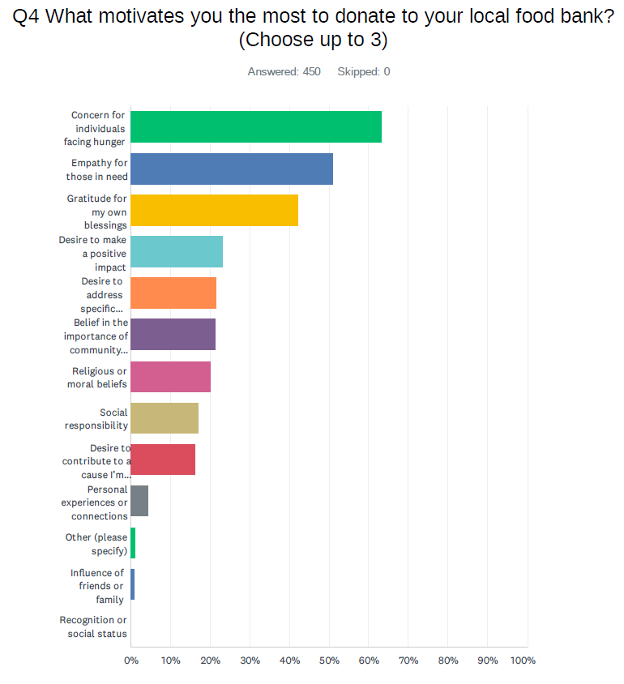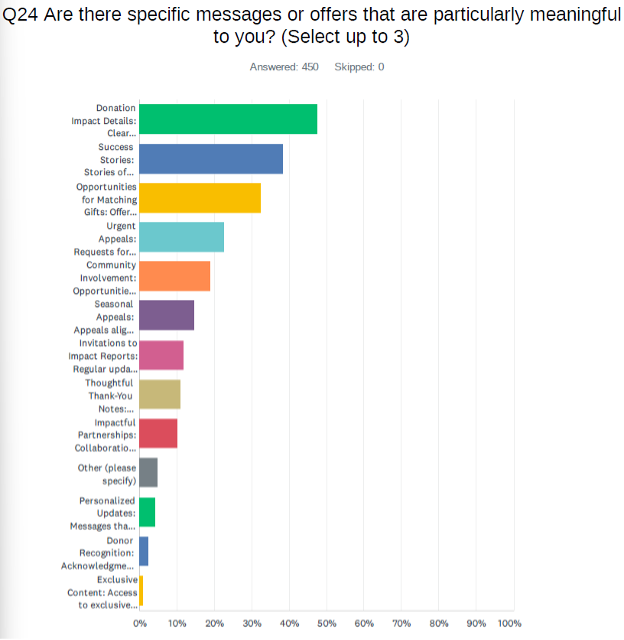About this Case Study
This case study provides an example for non-profit organizations seeking to deepen their understanding of donor motivations and enhance engagement strategies. If you are in the fundraising or hunger relief space, this case study is for you.
This case study focused on evaluating donor attitudes, motivations, and preferences to inform outreach strategies for food banks across the nation. The survey, distributed through food banks’ donor lists, provided actionable insights to improve engagement and strengthen relationships with supporters.
Summary
RKD partnered with food banks nationwide to conduct a survey of donors, gathering insights into their motivations for giving, preferred messaging, and barriers to engagement. This study provided valuable data to help food banks refine their communications and highlight the impact of their work.
Here’s the Challenge
Food banks needed a better understanding of what drives their donors to give and how they perceive the effectiveness of the organization’s programs. The challenge was to identify key motivators and address potential barriers, ensuring that donor engagement strategies resonate across diverse communities.
Here’s the Idea
We designed a survey to explore:
- Donor motivations
- Preferred messaging themes
- Awareness of additional food bank programs
- Barriers to engagement
By distributing the survey through food banks’ donor lists, we ensured that responses reflected the perspectives of active contributors.
Here’s the Execution
A quantitative survey was conducted with 450 donors across the country. Key components included:
- Questions about engagement with food bank programs
- Ranking the importance of factors like financial accountability and demonstrated impact
- Exploring the effects of external factors like the economy and recent events on donor commitment
The survey captured insights across a range of demographics and donor profiles.


Here’s the Positive Outcome
Two key findings stood out:
- Strong Motivations: Concern for individuals facing hunger (63.33%) and empathy for those in need (50.89%) were the most common reasons for donating, highlighting the emotional connection donors feel with food banks’ missions.
- Impactful Messaging: Donation impact details (47.56%) and success stories (38.44%) were the most compelling messaging themes, indicating opportunities to showcase tangible results and personal stories.
Applications to Business Objectives
The findings empower food banks to:
- Tailor communications to emphasize the tangible impact of donations and share personal success stories.
- Address barriers to engagement by improving clarity around impact and reducing overcommunication.
- Highlight additional programs, like child nutrition initiatives and mobile pantries, to deepen donor understanding and involvement.